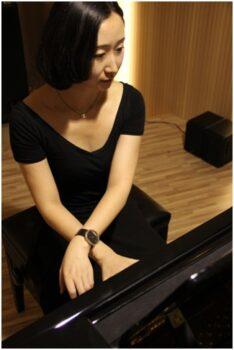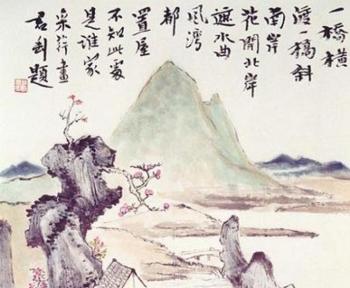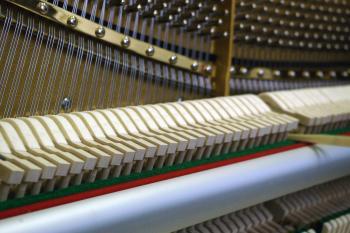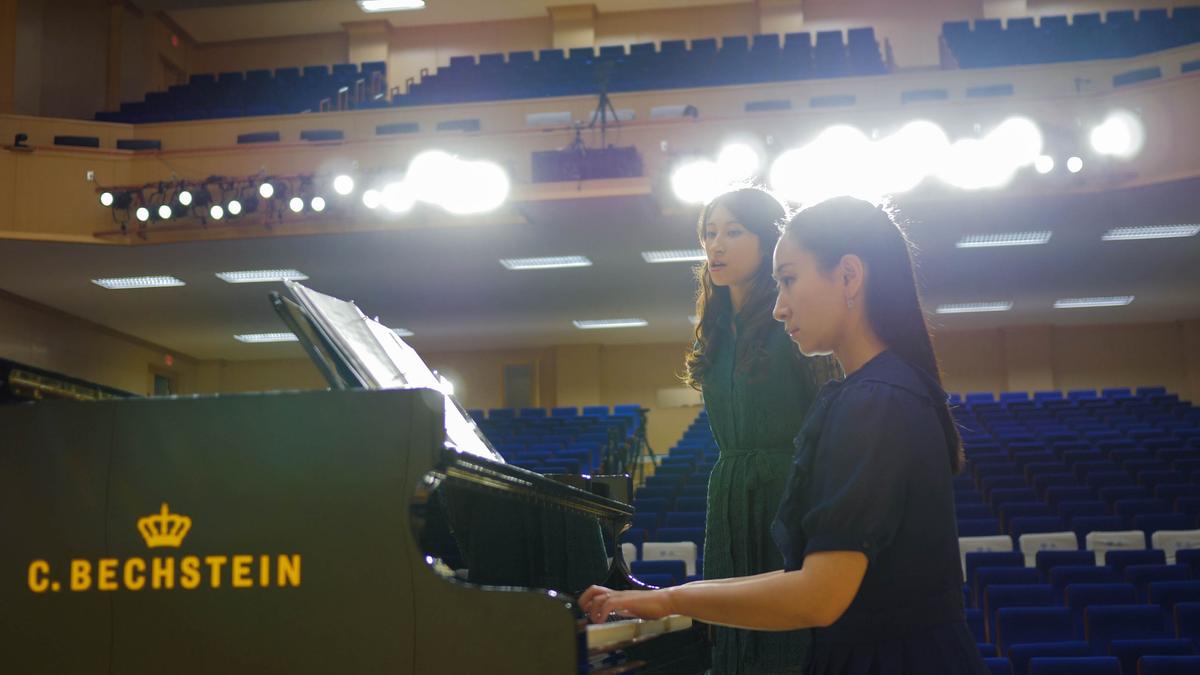Shen Yun Performing Arts is known for its beautiful dance and vivid colors, but there is a point in every performance when things become quiet, a soloist takes to the empty stage, and the audience is immersed in pure music that goes straight to the heart.
Sometimes this is a bel canto vocalist, singing an original work in Chinese that conveys soul-stirring spirituality. Sometimes it’s an erhu virtuoso, keeping thousands rapt in attention with a wide range of sounds and emotions with just two strings.

Pianist Qin Yuan. Courtesy of Qin Yuan
Since 2017, pianist Qin Yuan has accompanied these soloists on tour and, in joining the company, developed a sense of mission she feels is her calling.
“I wish that through my practice and effort, and the company’s touring, we can convey traditional culture, especially the traditional values behind it, and bring this to more and more people. It can affect hearts, and impact society in a positive way, towards a more moral and upright direction,” Qin Yuan said. “This is a mission of mine, you could say. And through our tours every year, we reach more and more people and have an even better impact.”
Qin Yuan’s mission as an artist lines up with the company’s. Shen Yun was founded in 2006 to revive the 5,000 years of traditional Chinese culture, which was nearly stamped out in just the last century with the communist takeover of China.
China was once called the Celestial Empire, and the culture is said to be divinely inspired. In the past 13 years, Shen Yun has traveled the world to bring to life this ancient culture through the performing arts, and its acclaim and reach have only grown with every passing year.
This truly is a deep and divine culture, Qin Yuan said. Though she was born and raised in China, Qin Yuan feels there is still so much more she has to learn about this traditional culture.
“There are still so many things I need to deeply investigate so that I can more directly and authentically bring out these ideas in the music,” Qin Yuan said.
Qin Yuan and the Versatile Piano
Shen Yun’s music, especially the solo showstoppers, is written in the ancient Chinese music style. Already embedded in these compositions is the style and rhythm of ancient Chinese music, Qin Yuan explained, so strictly speaking it is difficult to translate that to the piano, which is very much a Western instrument.The tonality of Western music and Chinese music tends to be different, for one, so the note intervals between the tones on a piano and those used on the erhu, a two-stringed ancient instrument, are naturally different.
Luckily, the piano is a versatile instrument, often said to contain a whole orchestra.
“Sometimes you really need to use the tone colors to mimic another instrument, a Chinese instrument,” Qin Yuan said. “For instance, when I’m accompanying an erhu, sometimes it’s ideal for the soloist if you can make the piano sound like a guzheng, or a pipa, to accompany the erhu. The tone colors here are a bit unique.”
During the 2018 touring season, Qin Yuan did just that accompanying the erhu solo piece. The music was written by Shen Yun Artistic Director D.F., an expert in ancient Chinese music.
Qin Yuan had a particular interpretation of the three movements of the piece.
We were conveying the music from a society during which people’s hearts were still pure, and through the piano and erhu, painting a picture of that life, through music.
“We were conveying the music from a society during which people’s hearts were still pure, and through the piano and erhu, painting a picture of that life, through music. There are three parts to this piece; there’s a slow movement first, as the pace of life for these people was not the hectic pace of modern-day life. There’s a bit of that feeling you get from Chinese landscape paintings.”

A beloved Chinese painting motif: landscapes with mountains, rivers, and lakes. Courtesy of Zhang Cuiying
“Then there is a fast movement, almost celebratory, thanking the gods for their blessings. The third movement, having received blessings, there’s a feeling of reverence,” Qin Yuan said.
“There were parts in the music where I thought of my left hand as playing the guqin [a kind of Chinese zither], I’m thinking of it that way and playing it as such, and I’ll let the piano create sounds as if it was a guqin; that way it can express the sound of that image of ancient China,” Qin Yuan said.
Another piece Qin Yuan performed that season was accompanying soprano Min Jiang in the operatic piece “Coming to Pass.” It speaks of a culture five millennia deep, a legend coming to pass, and the benevolence of the divine.

The system of moving parts inside the piano is called the action. Allen Zhou/The Epoch Times
Qin Yuan described the deeply philosophical lyrics that she reflected on as she wrote the piano accompaniment for this piece, mulling over some particular lines and the way the soprano would sing them. She remembered playing the portion of the music where the lyrics encompassed the message of the piece; in order to better help the audience grasp the meaning of the poetic and lofty words, Qin Yuan wanted to imbue the tone colors with the same meaning. She had to write the part so that the music itself was bright and powerful, full of restorative energy, and then imbue each performance with that energy herself.
“I was always thinking, with each performance how can I better convey this to the audience? How can I play this so that the audience understands, and can feel the meaning behind the music?” Qin Yuan said.
Music is something that speaks from the heart and to the heart, Qin Yuan said.
As a Shen Yun accompanist, Qin Yuan accompanies the soloists each touring season and the regular dance rehearsals—it’s all Chinese music, full of a deep sense of tradition. And mastery of Shen Yun’s unique style of music is no small feat.
“You need to have a tremendous grasp of traditional Chinese culture, you really do need a deep understanding of the culture in order to express the depth of the cultural content, through your fingertips, on the keys,” Qin Yuan said. “This is the most crucial and perhaps the most difficult part. You do need to accumulate that experience of understanding in order to really interpret this music; it’s not something you can grasp in a day or two of intensive study or by immersing yourself in the culture for a few days. It’s a deep study.”


















